Elizabeth Marilla is a mental health worker, writer, picture-taker, hiker, and mom living in Iowa. Connect with her on instagram at iowa.underfoot.
Wildflowers were a gateway to Mycophilia for me. Until very recently, I could only name and identify the most famous mushrooms I might wish for while walking around looking at wildflowers: Morel, Chanterelle, and Chicken of the Woods.
This post is dedicated the members of the Prairie States Mushroom Club, who warmly welcomed me into this bottomless new pastime during the pandemic, and who have very generously taught me many new things about the fungal biodiversity of Iowa–in particular Sarah, Glen, Roger, Marty, and Dean. These folx spotted some of the mushrooms pictured below. There are no additional forays planned for this year, but all fascinated newbies (as well as those with years of expertise) are welcome to join the club again next spring.
This post is also dedicated to the vigilant, patient, and devoted administrators of the Iowa Mushrooms Facebook page, total strangers who have been great teachers, helping me identify so many scrappy little specimens at all hours of the day and night! Impassioned beginners desperately need people like them. Luckily, it appears that the mushroom-loving community includes many genius laypeople, as well as quite a few very cool scientists.
Pictured below are ten of my favorite mushrooms found and photographed in southeast Iowa this summer and fall, with friends and often with my 3-year-old daughter. I have included a few of her recent mushroom drawings at the bottom of the post.
As always, if you are foraging for food, please proceed with extreme caution and respect for the flora, fauna, fungus, and history of the places you visit. If anyone would like to share additional wisdom (corrections, elaborations, questions I probably don’t have the answer to) in the comments, your knowledge and enthusiasm are encouraged.
Blue velvet! Turkey Tail, Trametes versicolor is the mood ring of mushrooms! I had never before seen one so hypnotically blue–they come in many colors, but are most often tawny and brown.
Laccaria ochropurpurea, a gorgeous, audaciously ochre edible, found at Big Grove in Johnson County. My toddler thought it made a perfect pretend cell phone.
This Phyllotopsis nidulans, or Stinking Orange Oyster, was found at Big Grove in Johnson County, and was, indeed, so freaking stinky! The night after smelling this species for the first time, I had a nightmare involving similarly terrible sulphuric smells. But it’s certainly pretty. And a great example of how smell helps ID mushrooms.
Gymnopilus luteus smells unmistakably like black licorice (thank you Mushroom Facebook admin Caleb), Pheasant Back smells like watermelon rind (my daughter seems to smell it from afar), and Mycena leptocephala smells like bleach. I’d like to get better at the subtler ones that often seem simply to smell “mushroomy” to me.
Just a delightfully pretty little solo Winecap, Stropharia rugosoannulata, found by one of the members of the Prairie States Mushroom Club and really showing off its eponymous and quite elegant wrinkly ring (Rugosoannulata). This mushroom is commercially cultivated, so even if you don’t spot it on a foray, you know it’s Winecap O’Clock somewhere.
That’s one VERY HAIRY FAIRY HELMET! I’m always captivated by a fungus on a fungus and hoping someday to see a fungus on a fungus on a fungus. Pictured below is an especially phototropic Phycomyces species (maybe Spinellus fusiger) parasitizing a Bleeding Fairy Helmet (Mycena haemotopus), a mushroom that bleeds red like we do. Found at Ryerson’s Woods in Johnson County.
The pin mold species is pictured here in its erect reproductive phase and, thrillingly, can sexually reproduce with itself! The doodles at the ends of the stalks are called sporangia and are basically little spore sacs.
The sight of an Amanita brings out the evolutionarily adaptive measure of Mycophobia in me!
This specimen is just “hatching” from its characteristic “egg” (universal veil or volva).
Ischnoderma resinosum is SO SQUISHY, like nature’s little stress ball, maybe they should call it Squishnoderma. That corny pun has to at least be a helpful mnemonic for remembering this ID, as it’s far squishier than other shelf mushrooms that grow around here. Pictured below bejeweled in amber goo (the “resin” in resinosum). This itty bitty little Emily Dickinson poem is quite fitting.
In early October my daughter and I found this Grifola frondosa (Hen of the Woods) as a tiny guttating newborn, about 2 cm across, likely having fruited overnight. I only knew what it was having found a huge fruiting growing in the same unusual spot last year.
We began popping in on the mushroom unannounced like nosy neighbors, every few days, watching this baby grow and grow and grow. We observed many milestones, including the very cool “creepy brain stage” pictured below, and finally harvested toward the end of October, cooking “steaks,” “bacon,” and more.
There was and continues to be a lot of invisible life cycling going on for this organism that we can’t behold with a camera. Observing this evolution together over weeks was a very special experience for my daughter and I to share. Those interested in viewing more of the timeline are welcome to visit iowa.underfoot on instagram. Hen of the Woods is also known as Maitake, or “dancing mushroom.”
Pholiota polychroa. I often find the yellow/tawny species in this genus, but this was my first purple! So impressed by anything purple in the forest. The great blue lobelia and purple asters were still blooming at this site as well, so funky relative to the browns and greens of a fall forest on a cloudy day.
This little Hericium coralloides (Coral Tooth Fungus) is another specimen I visited several times. Seen in two phases of growth below. Though this mushroom is edible, it was way to pretty to pick when I came back for it.
I left it behind to be glorious and instead found its more familiar cousin Lion’s Mane (Hericium erinaceus), cultivated by Midwest Mushrooms Co. (based in Hiawatha, that weekend at a coop and cooked Hericium “steak” and eggs to get a sense of the flavor and texture, though I’m not sure how the two species differ in taste.
“Stinging flowers eating a poison Amanita and mama and grandma exploring and climbing,” by Lilou, age 3. So astonished she invented a trippy new Mycoheterotroph–a plant that eats by parasitizing fungus, like Ghost Pipe.
“Old tree stump with a little mushroom inside … and bunny ears,” by Lilou, age 3.
Editor’s note: Eileen Miller shared a dozen of her photos of Iowa mushrooms in this Bleeding Heartland post from 2014.

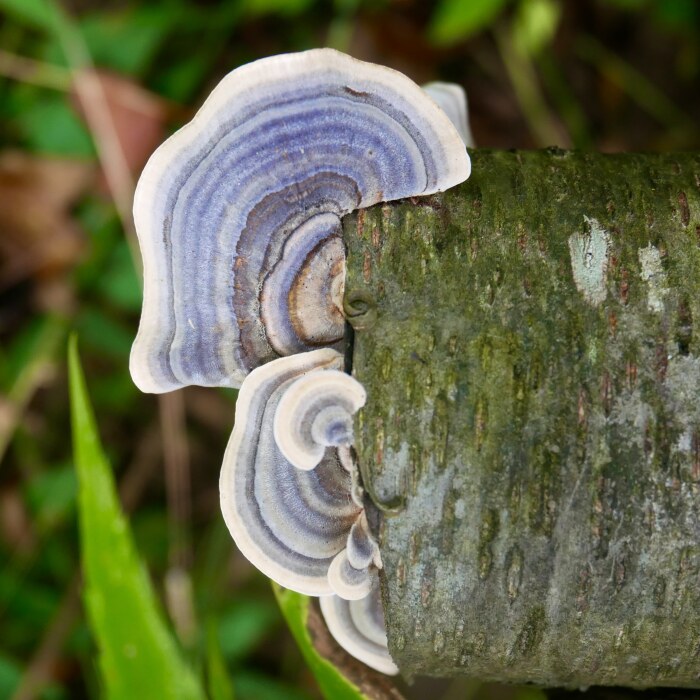
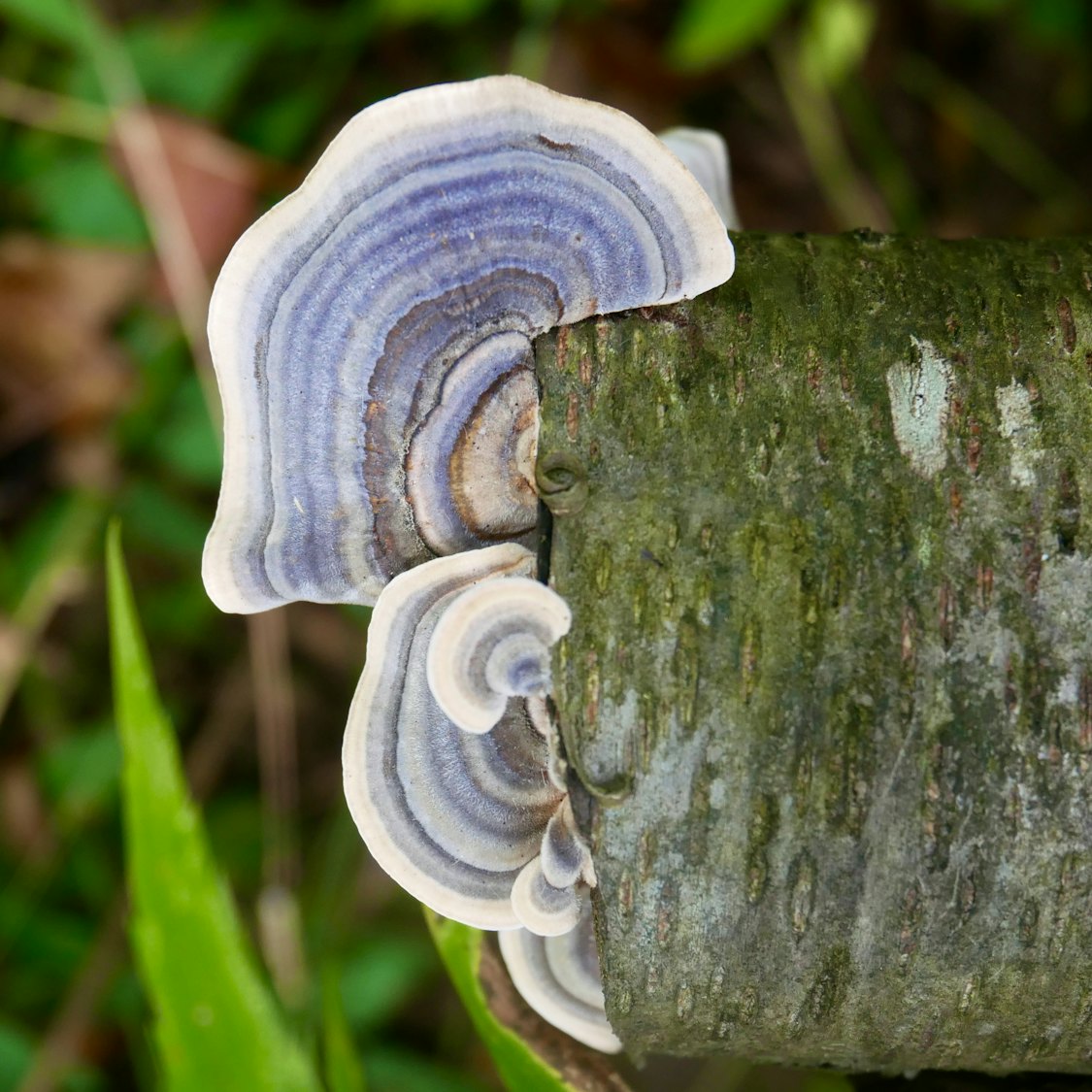
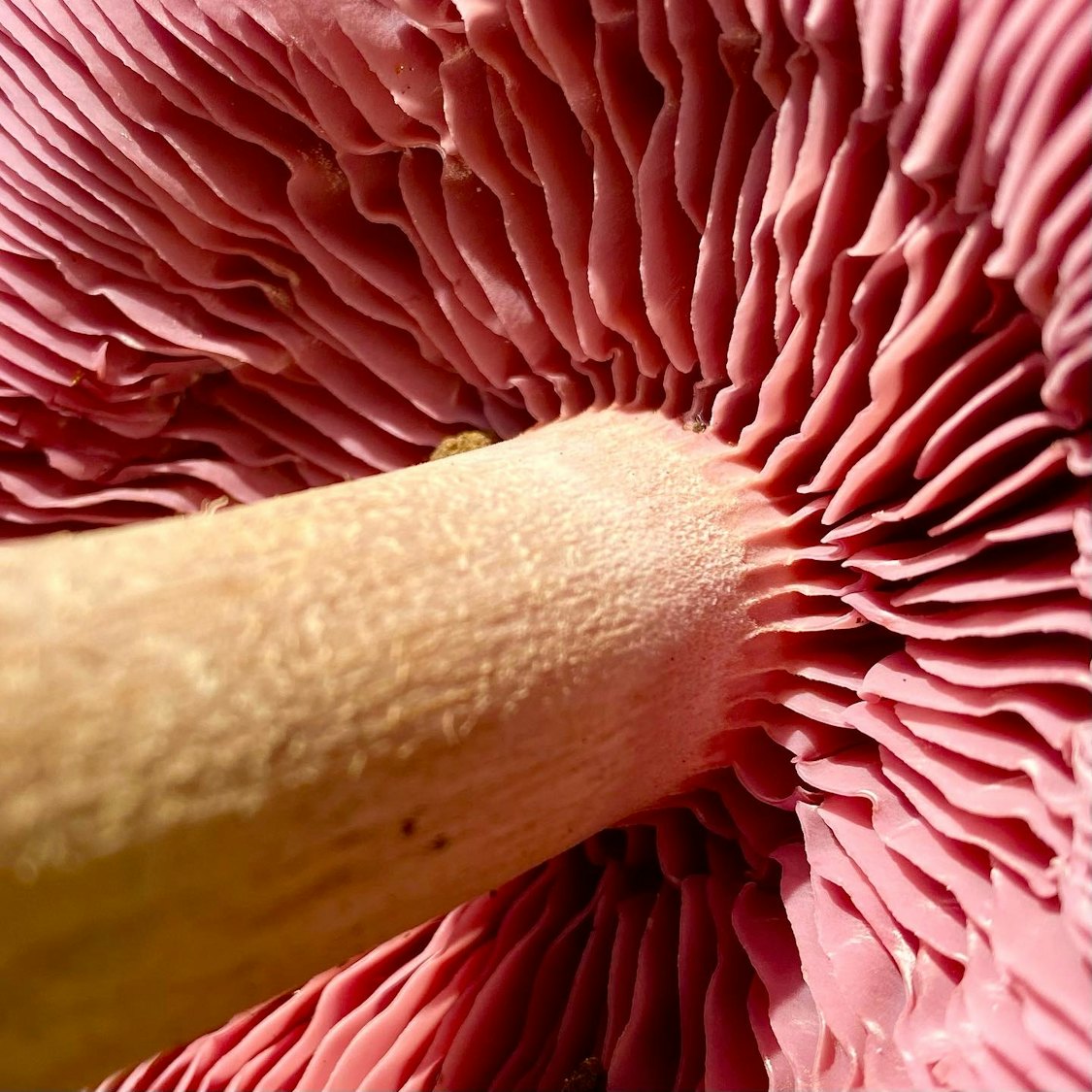
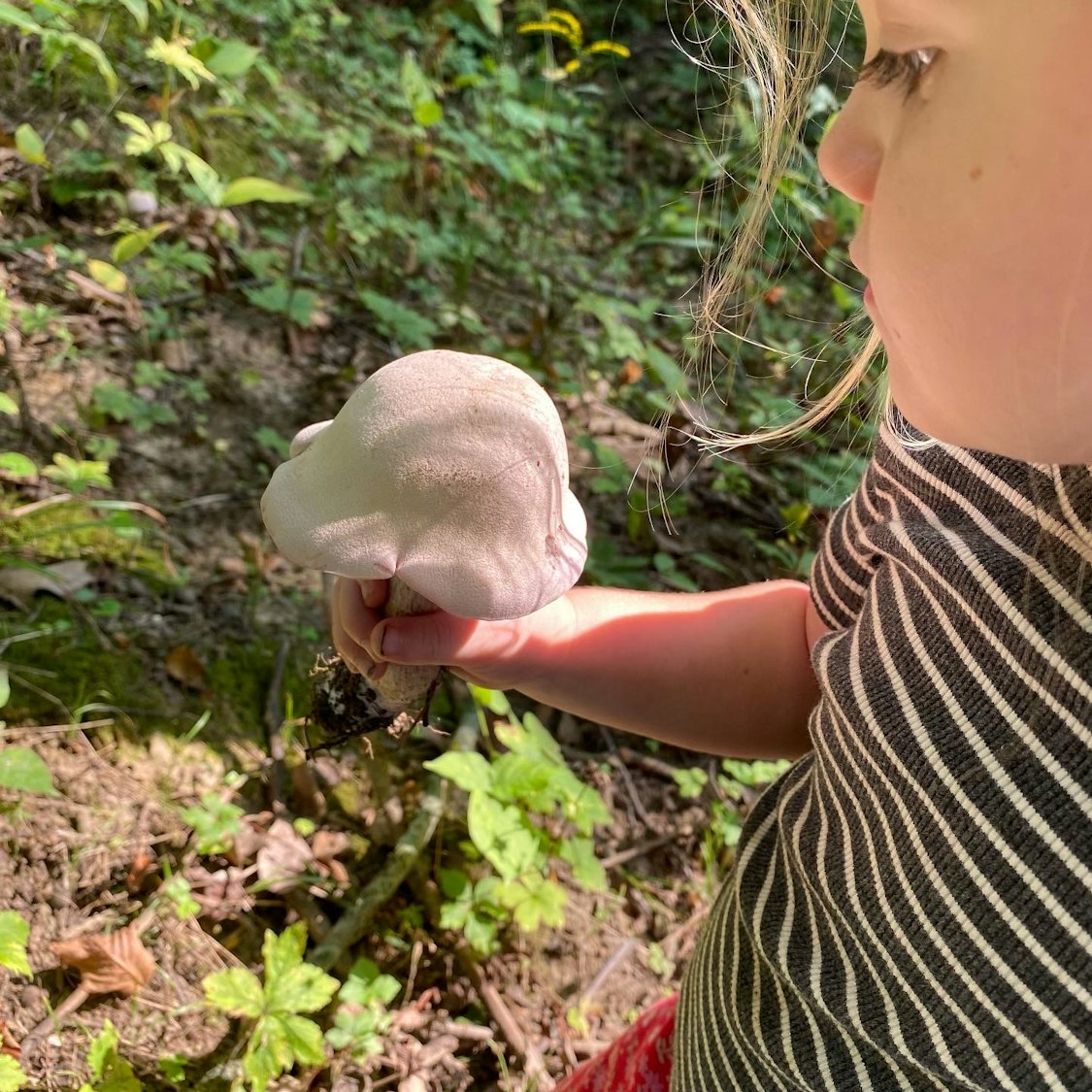

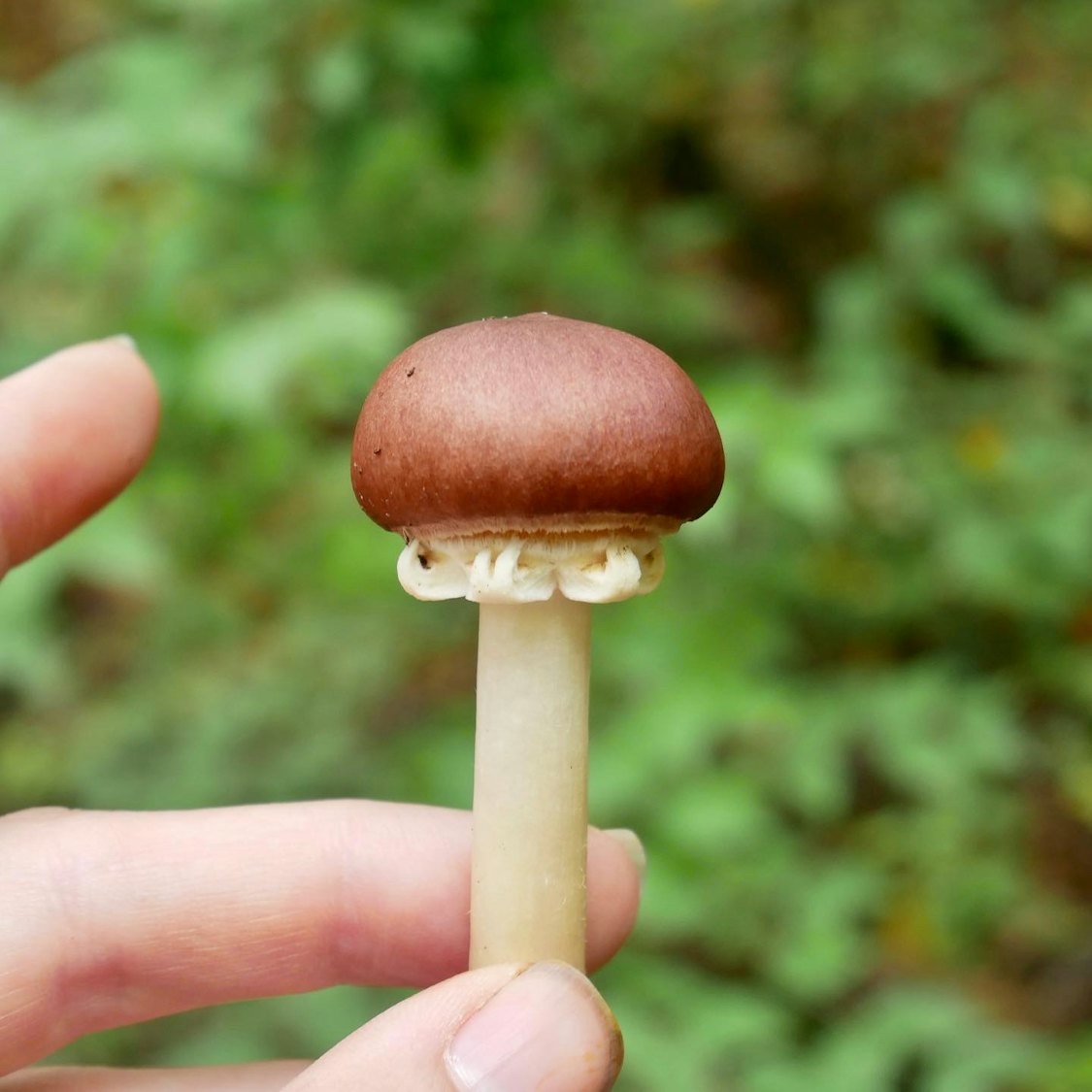
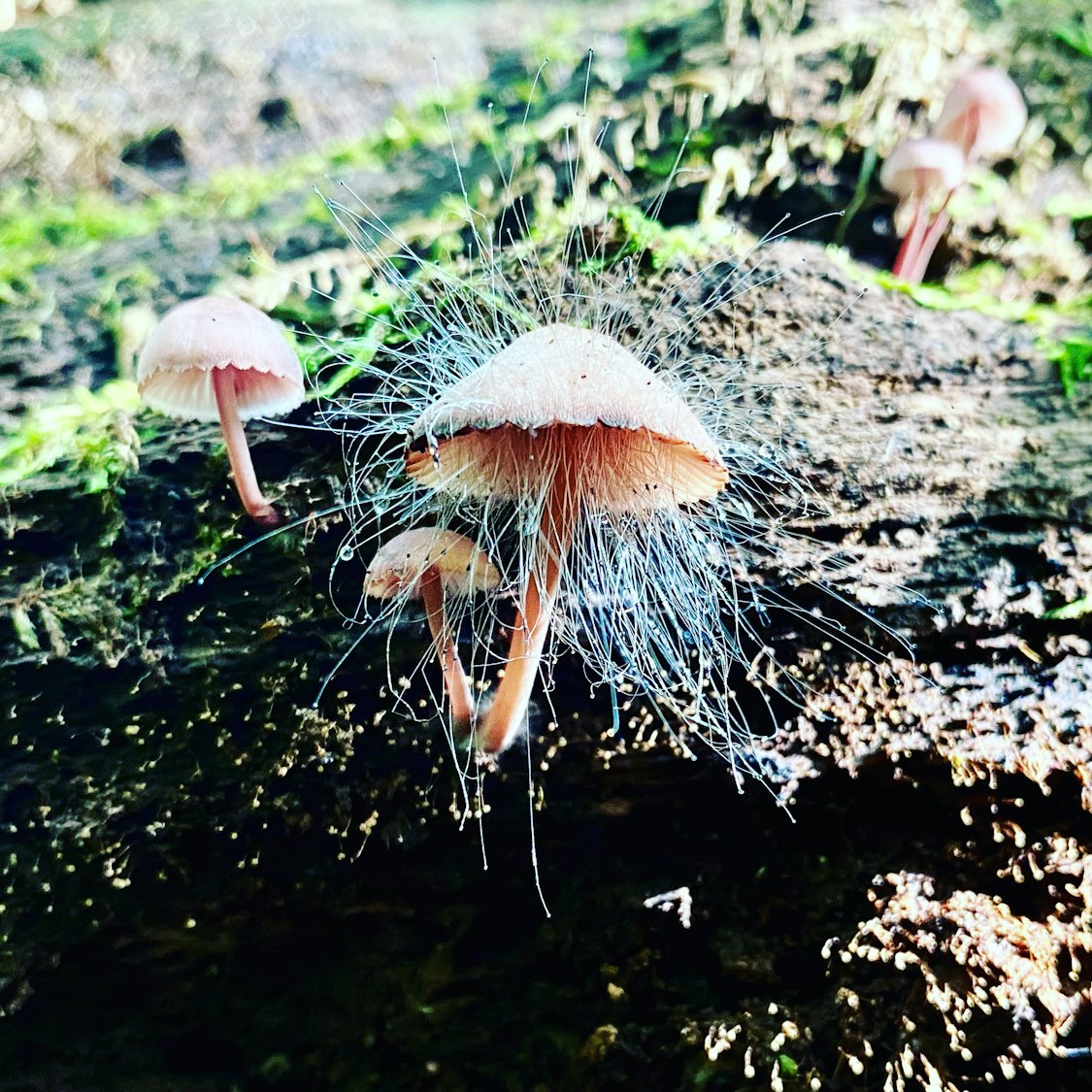

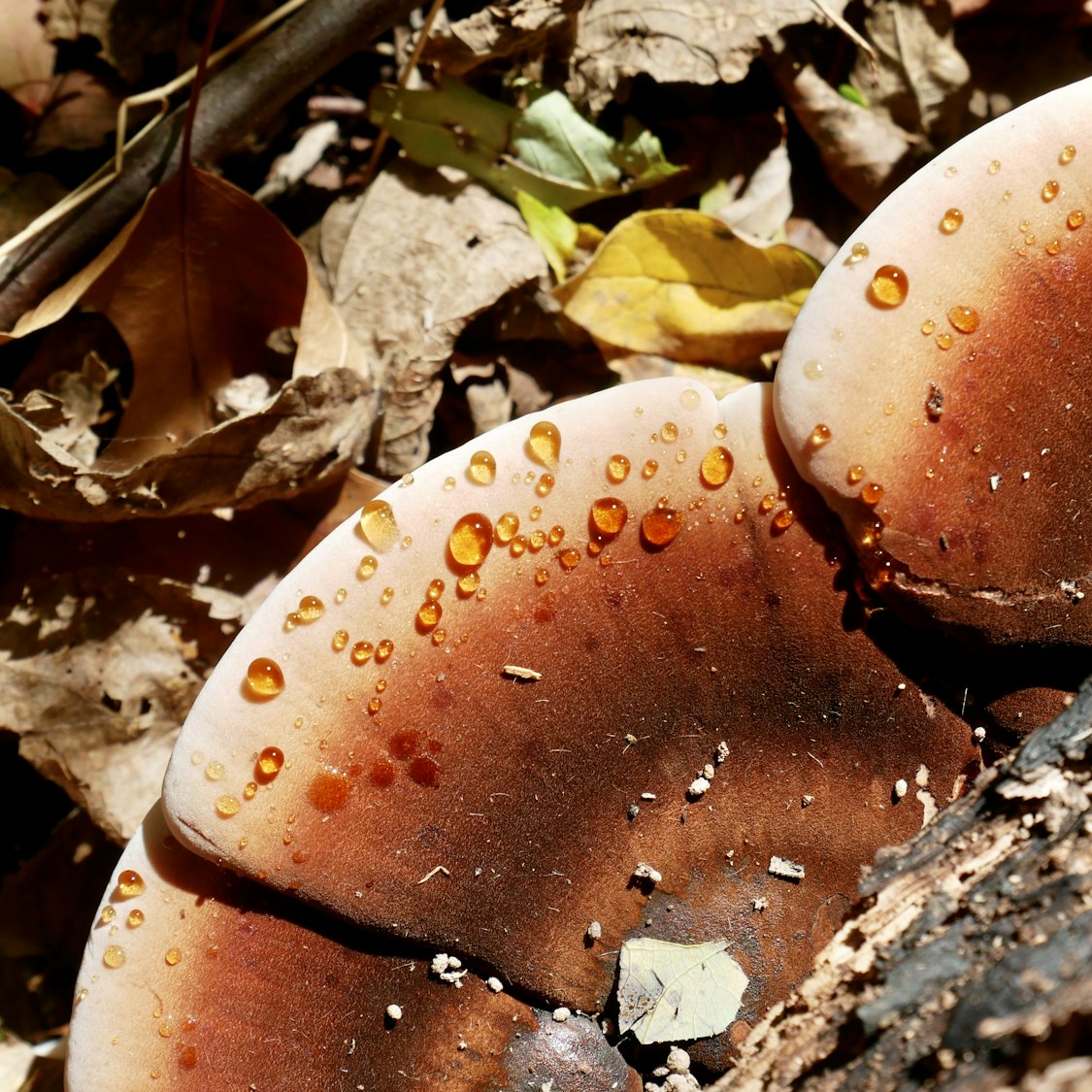
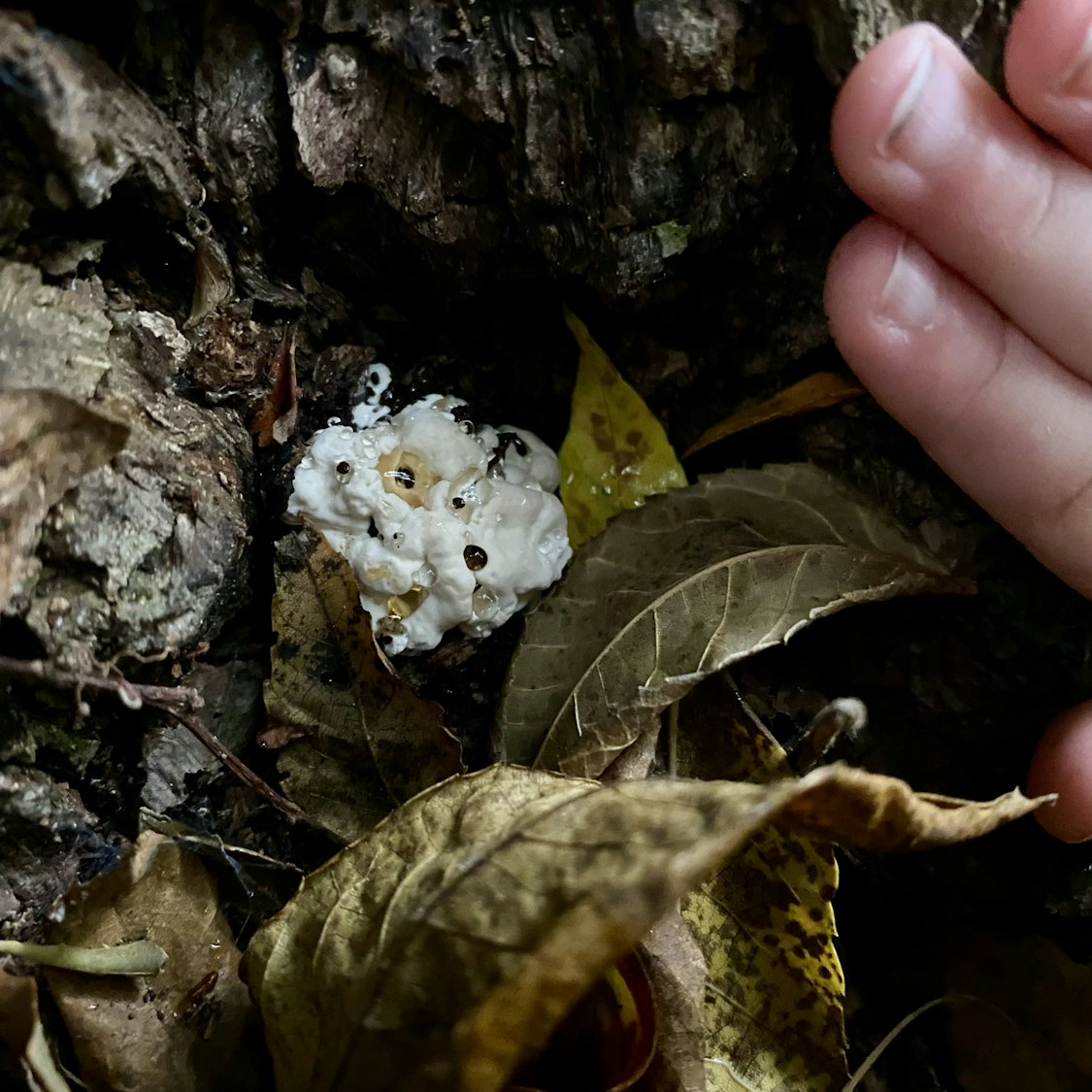
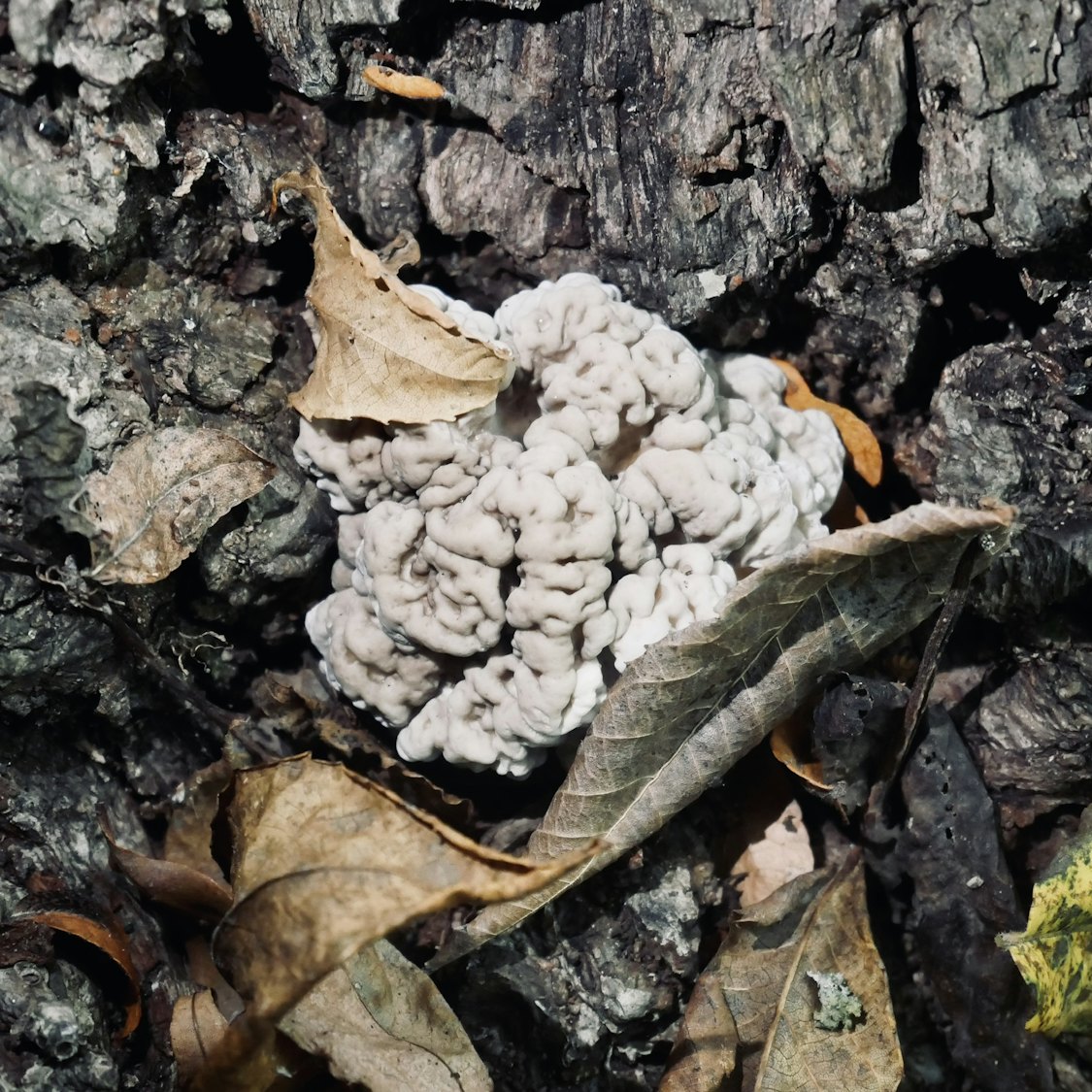
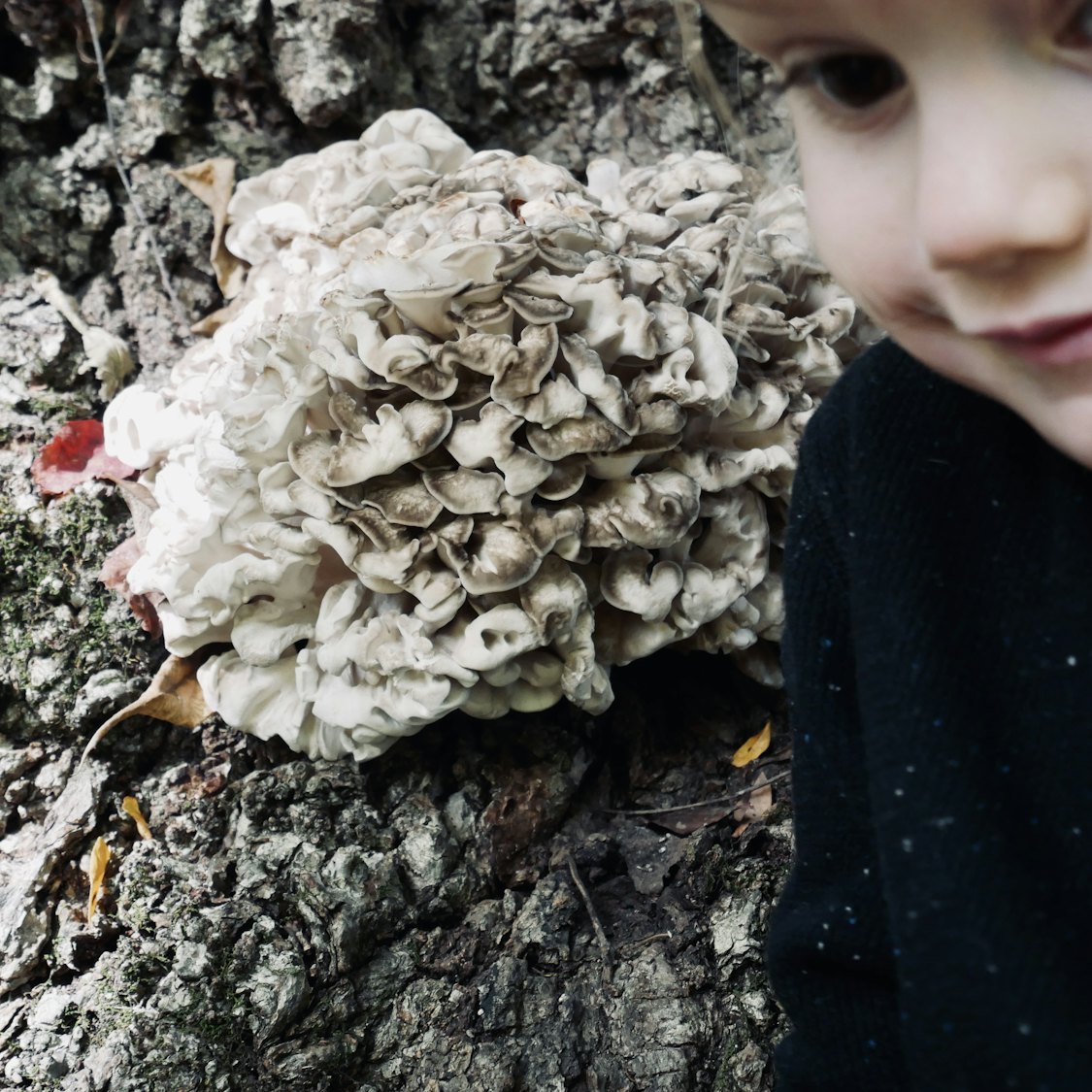
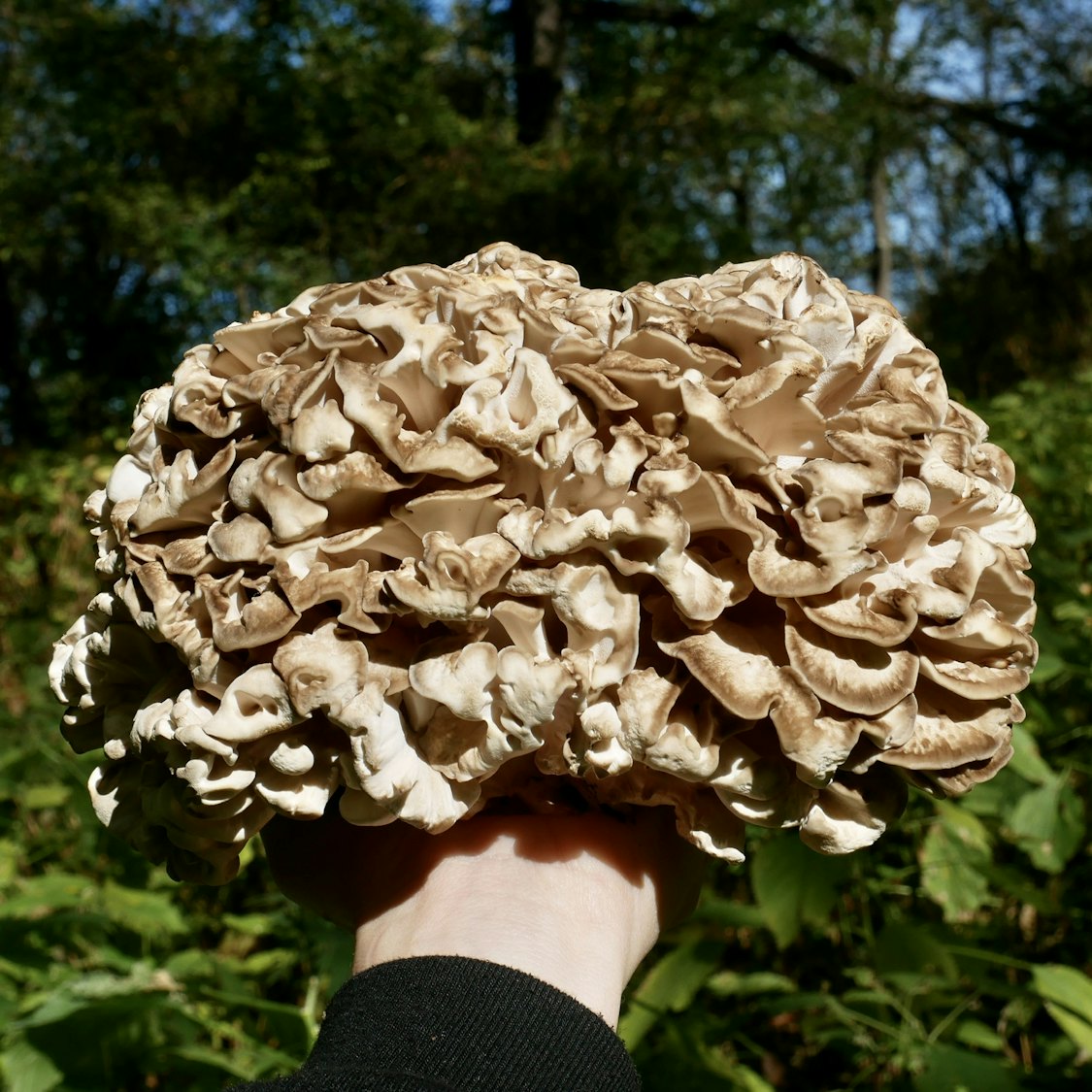
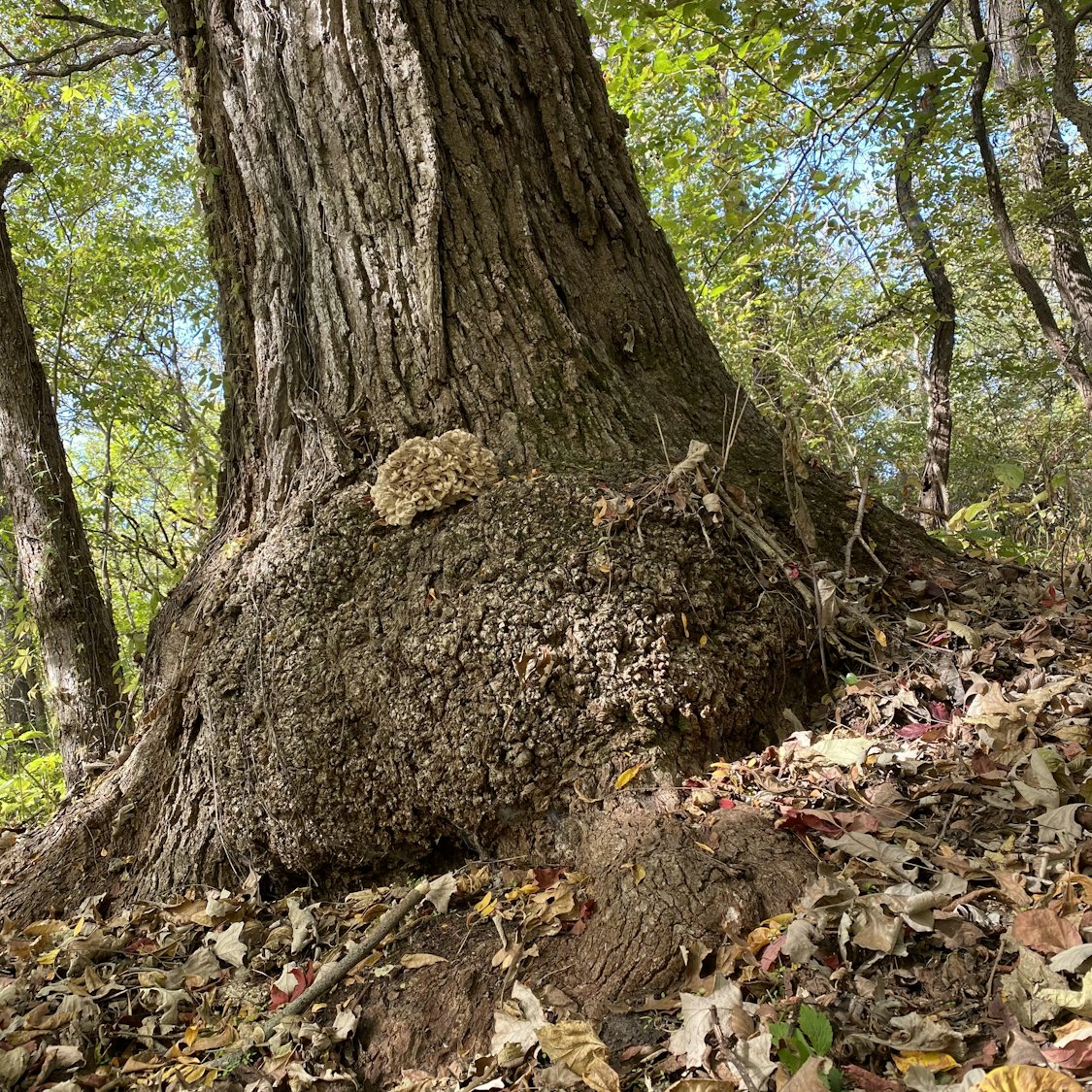
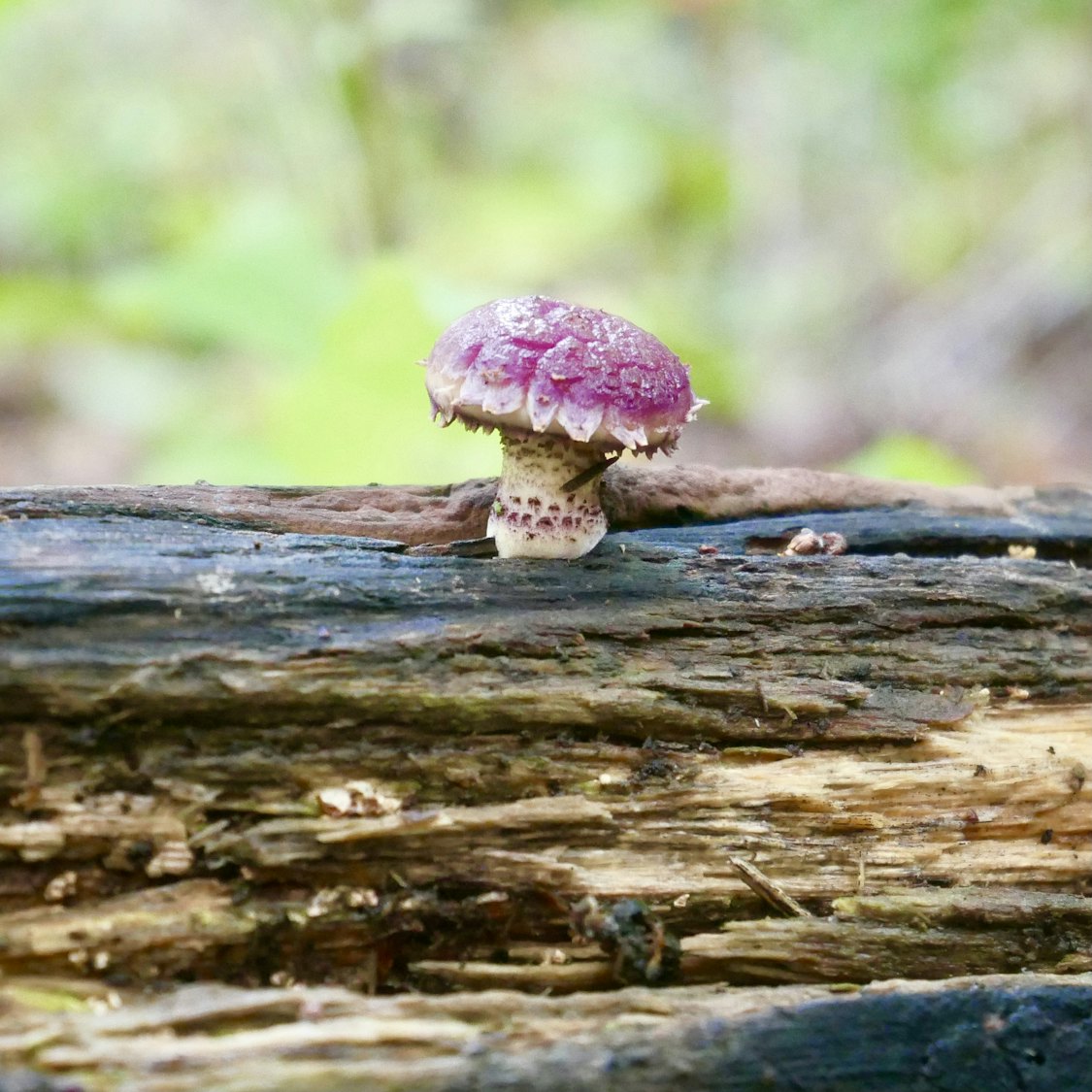
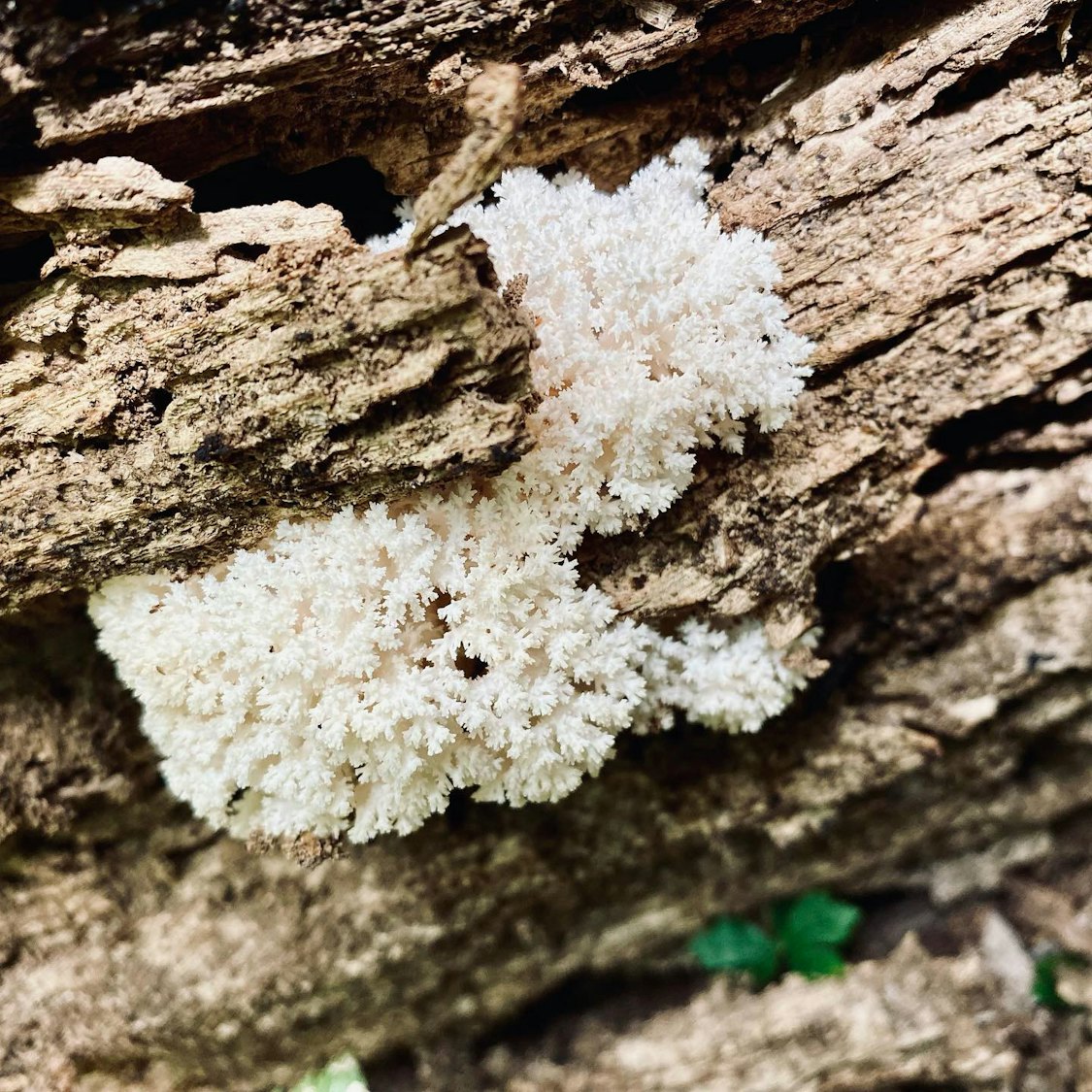
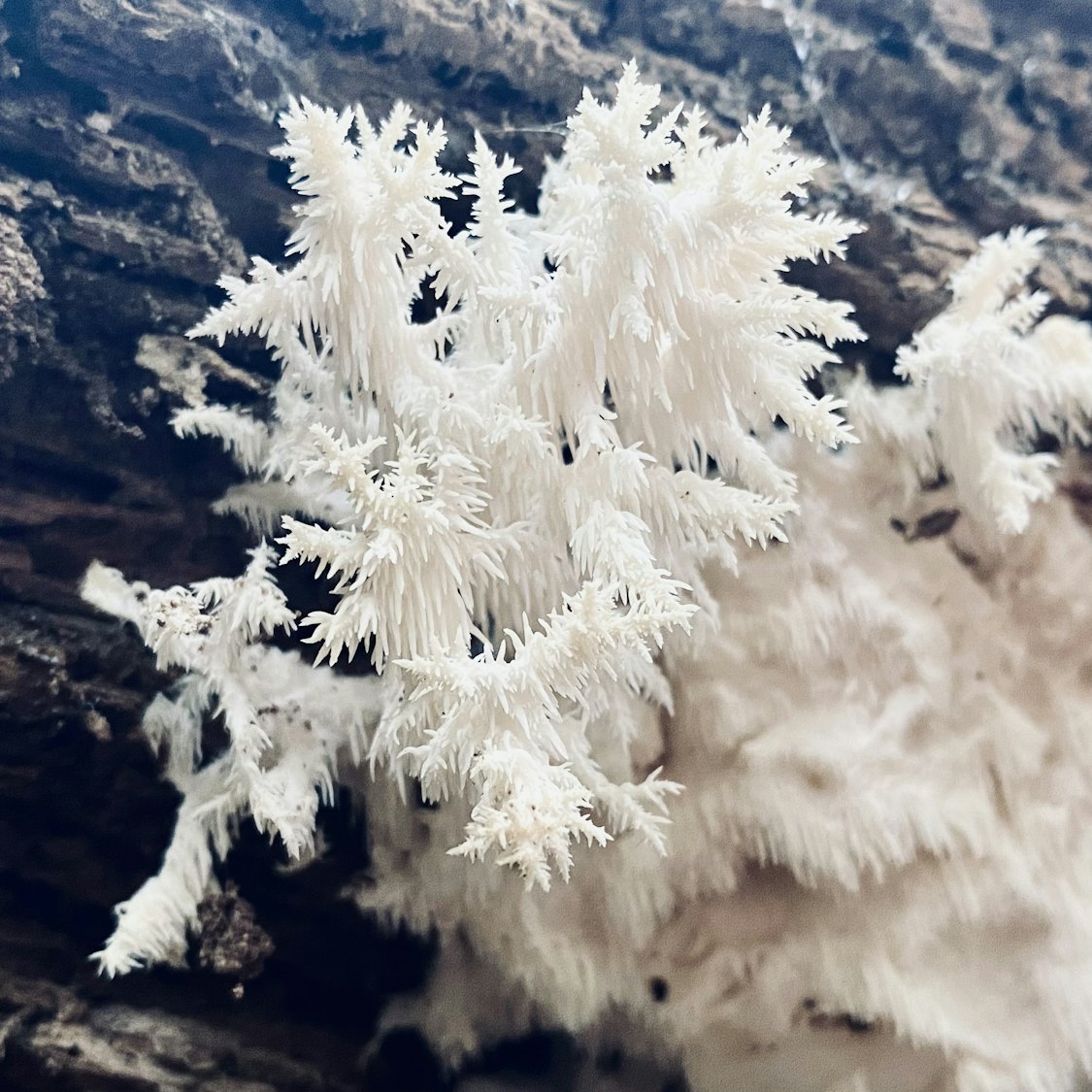
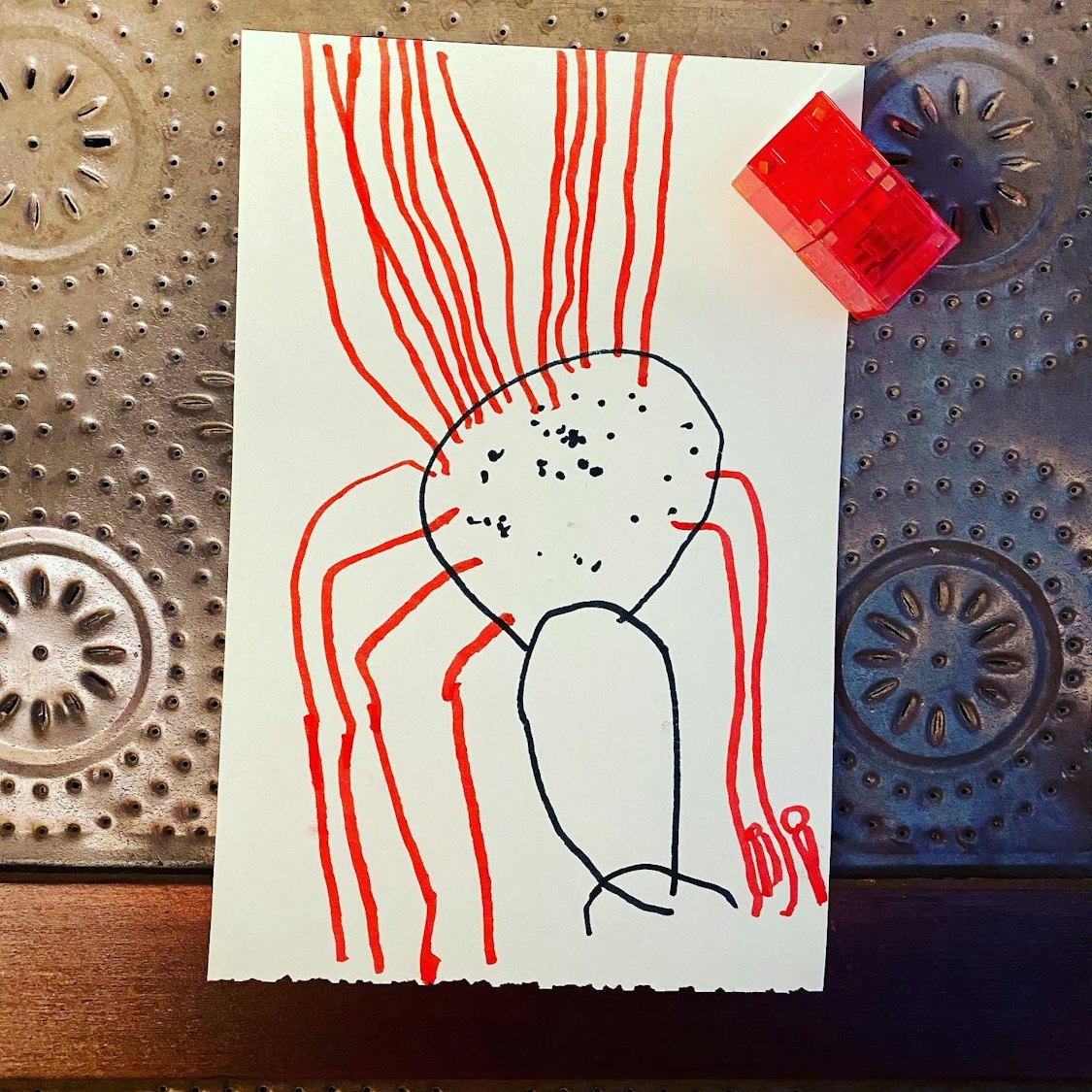
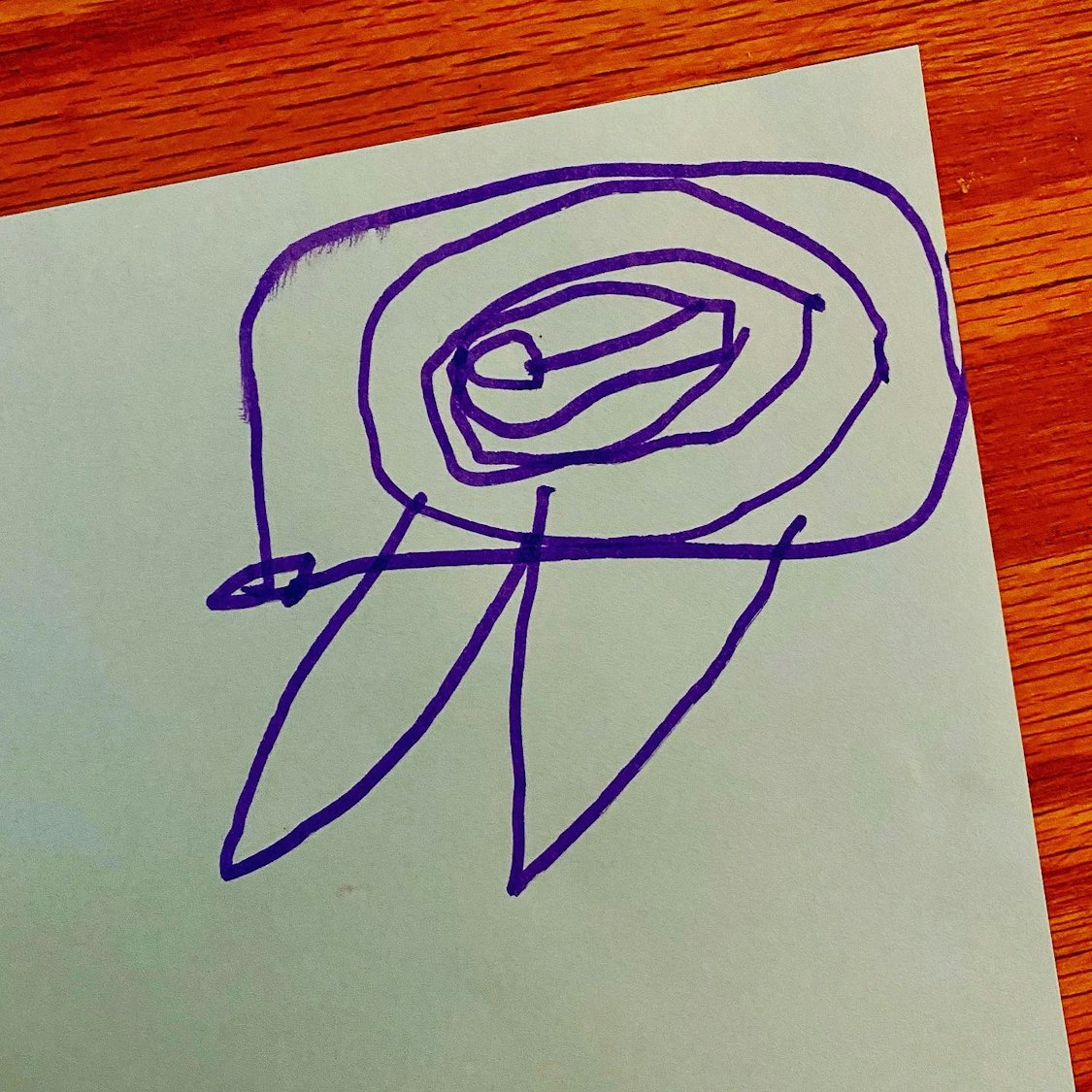
3 Comments
These photos are great.
Thank you.
My yard in this very dry year nurtured the largest fungal growths I’ve ever seen here. I don’t know their names, though. And unlike yours, they weren’t so easy on the eyes. I still let ’em do their thing, though. (As if I could stop it…Ha! Most of their being, I’m sure was unseen, underground.)
Entangled Life (book), Fantastic Fungi (film) are worthy for couch time.
Fly_Fly__Fly_Away Thu 18 Nov 11:25 AM
Gorgeous photos
I really enjoyed seeing them. Thanks, and more thanks for all the information!
Unfortunately, the most recent Iowa fungi news I’ve read is about the invasive Chinese oyster mushroom that is rapidly spreading in Iowa, and according to at least one report, may pose a threat to native mushrooms. When it comes to new invasive exotic species, we keep making the same mistakes over and over.
I would very much like to look at the Iowa mushroom website, but I don’t want to join Facebook. If the website ever moves off Facebook, I’ll appreciate the opportunity to do some exploring.
PrairieFan Mon 22 Nov 12:04 AM
Informative and Fun
Thanks for this very fine post–enjoyed your photos, some of most unusual fungi. Appreciate the inclusion of info on the mushroom group. Fully agree–great admins on the Iowa Mushroom FB group.
LPConrad Sun 16 Jan 10:36 PM